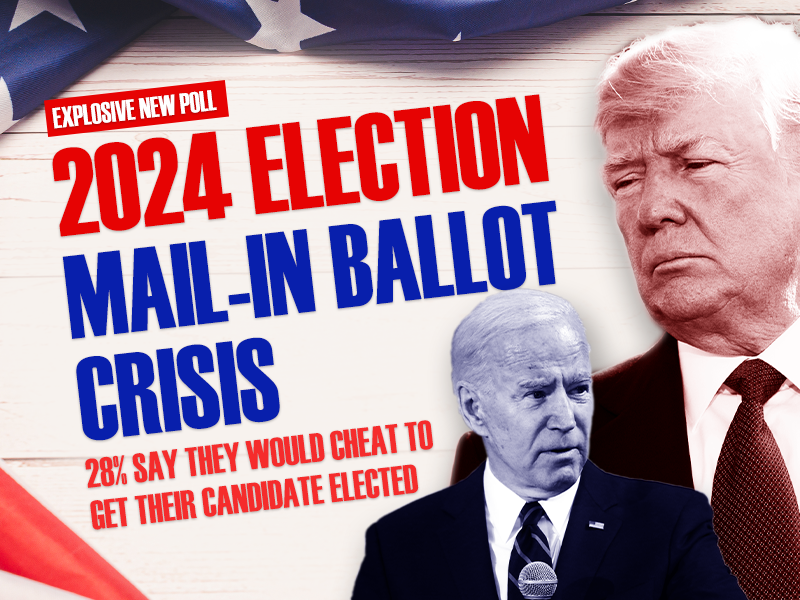Conventional political wisdom tells us the United States is suffering from a hitherto unseen level of partisan strife paralyzing the nation and preventing our lawmakers from solving our problems.
Instead of parroting these well-worn assumptions, Stanford University political science professor and Hoover Institution Senior Fellow Morris Fiorina defies this paradigm and analyzes the truth about American politics in his new book, Unstable Majorities: Polarization, Party Sorting, and Political Stalemate.
Myth of Polarization
Jam-packed with charts, figures, and research, the book expertly demonstrates that, contrary to popular belief, American politics have not really become more polarized or uncivil.
If our politics were truly becoming more polarized, Fiorina writes, increasing numbers of voters would be aligning with one political party or the other, which is not happening.
“Knowing that Americans historically have not been particularly ideological, we might conceptualize polarization in partisan rather than ideological terms,” Fiorina writes. “If so, over the years independents should have been migrating to the Democratic and Republican camps. But partisanship data are even less kind to the polarization claim than ideological data. Administrative officials in states with party registration, currently twenty-one states and the District of Columbia, report a sharp rise in the proportion of Americans registering as ‘decline to state’ or some other term for independent, despite potential restrictions on their opportunity to vote in semi-closed or closed primaries.”
Nothing New Under the Sun
While reading Unstable Majorities, one may be surprised to learn that, empirically speaking, politics today looks much like what it was in past eras.
Indeed, this revelation may seem obvious after finishing the book, leading one to wonder why pundits so frequently claim polarization is waxing, because Fiorina shows there is no quantifiable evidence for such claims.
“All in all, the data compiled by academic and commercial survey organizations indicate that in broad outline the American public has changed little in the past four decades,” Fiorina writes. “In the aggregate, the public today looks much the same as the one that chose between Gerald Ford and Jimmy Carter in 1976, well before the polarization era. This inconvenient fact makes it hard to argue—as some pundits and a few political scientists continue to do so—that polarization in Congress and state legislatures and among party activists and donors has been driven by the polarization of the vast majority of Americans who do not belong to the political class.”
Challenging Political Assumptions
Unstable Majorities challenges readers to reassess their grasp on political reality, to question whether their assumptions are based on facts or on partisan feelings.
Using facts backed up with copious footnotes and references, the author demonstrates an important truth: the more emotional investment one has in politics, the more false perceptions one will have about people with opposing political beliefs. The more partisan an individual is, the more likely he or she is to construct straw man versions of political opponents, embodying perceived negative traits not based in reality.
“All in all, the evidence indicates that those most psychologically involved in politics have the least accurate perceptions of the views held by their fellow citizens,” Fiorina writes. “False polarization is widespread.
“To wit, what proportion of Republicans are senior citizens, Southern, evangelicals, or earn upward of $250,000?” Fiorina writes. “What proportion of Democrats are black, atheists or agnostics, union members, or LGBT? The results are mind-boggling. Misperception is massive. For example, Democrats think that 44 percent of Republicans make more than $250,000 per year, when the actual percentage is 2, and that 44 percent of Republicans are senior citizens, when the actual percentage is 21.”
Explaining 2016
Given Fiorina’s demonstration of how disconnected political science has become from reality, it should come as no surprise that many pundits have incorrectly analyzed the outcome of the 2016 election.
Instead of relying on predictions of sweeping sea changes in American political sentiment or the ascension of this or that social group, Fiorina opts to employ a much simpler explanation for Donald Trump’s electoral victory.
The reason Trump defeated Hillary Clinton, Fiorina writes, is simply that Trump was better positioned to take advantage of voters’ dissatisfaction with the nation’s government.
“So, while there is no discounting the potential consequences of Trump’s victory, in itself it provides little basis for concluding that the election reflected some sort of massive shift in the values and beliefs of the American public,” Fiorina writes. “As in all elections, the vote reflected a combination of long-term conditions in the country and short-term factors associated with the candidates and the campaigns. In the case of 2016, a substantial portion of the electorate had become increasingly dissatisfied with long-term developments. One candidate (Trump) was positioned to capitalize on this dissatisfaction and the other one (Clinton) was not.”
Facts, Not Stories
As with many other branches of science, correctly explaining the phenomenology of politics requires the observation of actual facts about the world around us.
Unstable Majorities: Polarization, Party Sorting, and Political Stalemates cuts through the just-so stories and fables many talking heads in media have constructed. Readers will delight in having their assumptions challenged, as I did while reading this fascinating book.





